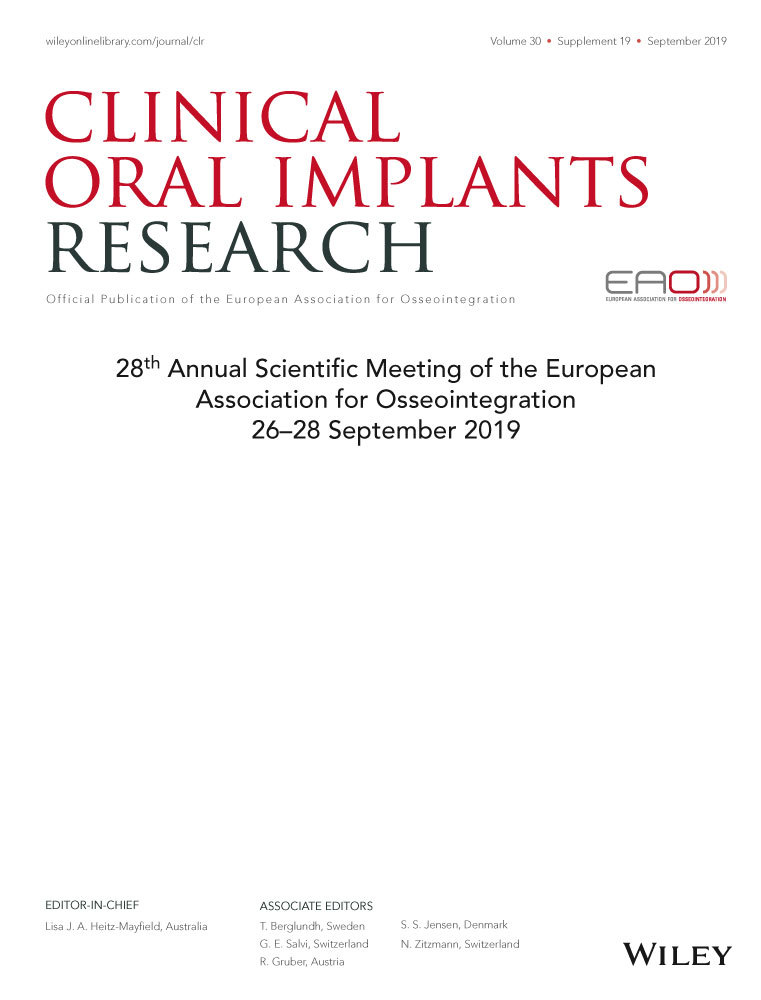Effect of porous architecture of SF PGA electrospinning scaffold and cell seeding density on bone tissue engineering- An in vitro Study
15420 POSTER DISPLAY BASIC RESEARCH
Background
Recently a shift is taking place where bone tissue grafts are being replaced by bone tissue engineering approach. Biodegradable polymeric electrospinning scaffolds have been widely used in bone tissue engineering as a platform for cell grow and subsequent tissue regeneration. Although the significance of cell seeding density and scaffold pore size in bone tissue engineering has been proved, the interaction between them remains unclear due to the existing studies are independent studies.
Aim/Hypothesis
The present work assesses the effect of porous structure of silk fibroin polyglycolic acid (SF PGA) fiber scaffold, cell seeding density and their interaction on scaffold performance, cell attachment, proliferation and osteogenic differentiation.
Material and Methods
SF PGA scaffold with different sacrificial template content were constructed by electrospinning and the sacrificial fibers were subsequently removed. The physicochemical and mechanical properties were measured and analyzed via scanning electron microscopy (SEM), Fourier transformation infrared spectroscopy (FTIR), differential scanning calorimeter (DSC), mercury injection and universal testing machine. The degradation rate and composition of the scaffold after immersing in PBS for 12 weeks were examined. SD rats Bone marrow mesenchymal stem cells (BMSCs) were used to investigate the attachment, survival rate, proliferation and differentiation of cells on electrospun scaffolds with different pore sizes and cell seeding density (1×104, 5×104, 1×105, 5×105, 1×106 cells/ml) at day 1, 4, 7, 14 and 21 based on phalloidin DAPI fluorescence staining, live dead staining, DNA contents, osteogenic gene expressions, alkaline phosphatase (ALP) activity and Alizarin Red Staining.
Results
Scaffolds with different pore size (15.95 ± 5.58 μm and 40.79 ± 13.71 μm) were fabricated by electrospinning. DSC verified the complete removal of sacrificial template. There were no significant differences in fiber diameter, water contact angle and degradation behavior between the two scaffolds. Both types of scaffold displayed indiscriminate Young's moduli. Degradation rate of SF PGA scaffold slow down and the degradation product transformed from acid to alkalescence. The effect of pore size and cell seeding density on cell survival rate was not remarkable and survival rate increase from D1 to D4. BMSCs stretched full, protrude clearly in large pore size group (Group L). A marked growth was observed in Group L during 7 days proliferation while small pore size group (Group S) had declined sharply by D7. The difference of cell seeding density was distinguished at the beginning and fade away over time. Group L demonstrated higher ALP activity and mineralization.
Conclusion and Clinical Implications
The differences of cell seeding density was not so profound as the difference between scaffolds with diverse pore size. The utmost importance of scaffold design instead of cell seeding density has been verified and SF PGA electrospun scaffold with larger pore size (40.79 ± 13.71 μm) could be a great candidate for bone regeneration. The ideas presented in this article can provide new thought and method to solve clinical bone defects problem.




